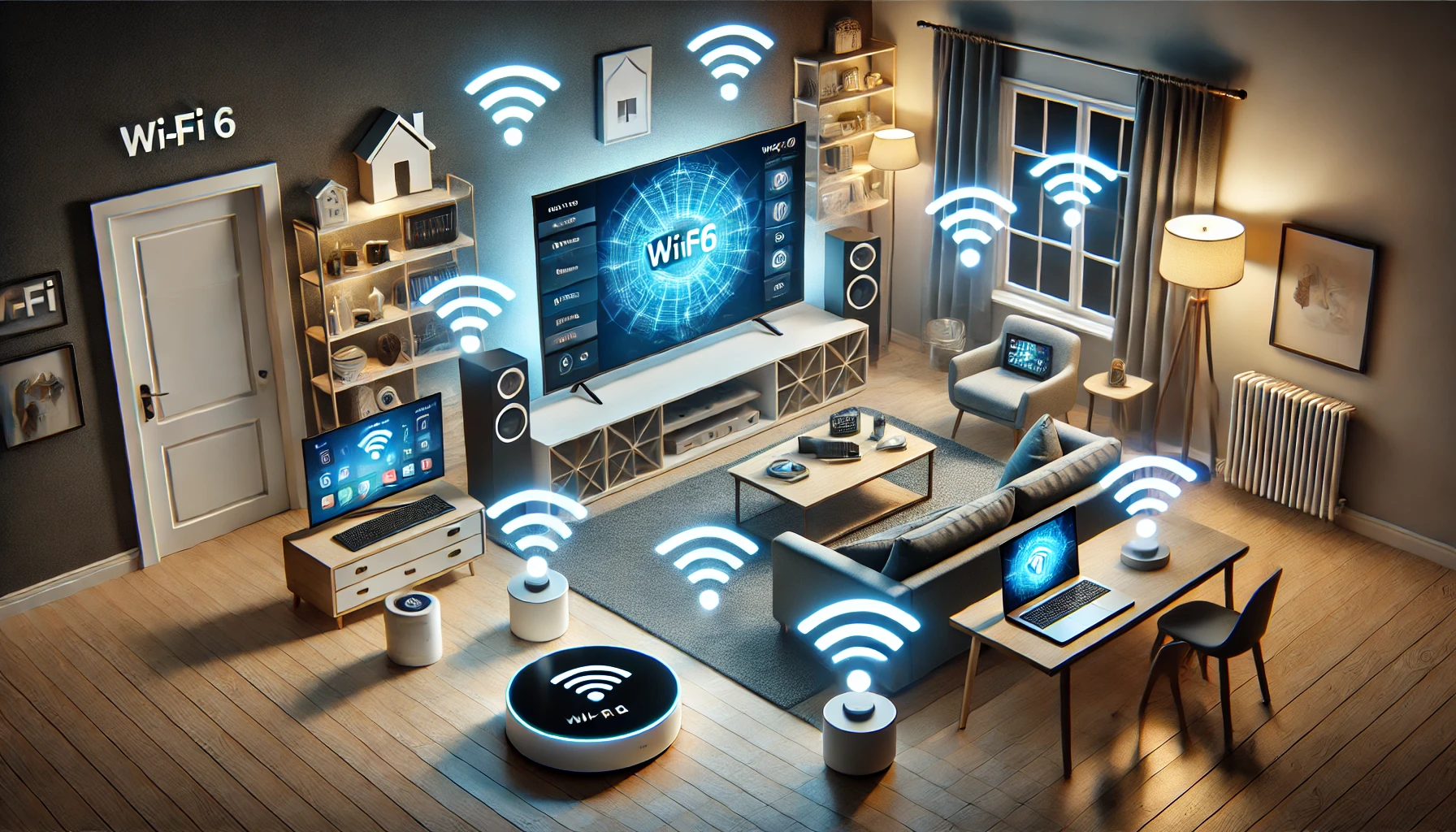
Wi-Fi 6: The Future of Wireless Connectivity
Introduction
In today’s hyper-connected world, fast and reliable internet is more crucial than ever. Whether at home, in the office, or in public spaces, seamless connectivity can significantly impact productivity, entertainment, and even smart device functionality. Enter Wi-Fi 6—the next generation of wireless technology designed to deliver faster speeds, improved efficiency, and better performance in crowded environments.
Wi-Fi 6 (also known as 802.11ax) isn’t just about speed; it’s about smarter connectivity. It builds upon the foundation of Wi-Fi 5 (802.11ac) by introducing several key improvements that enhance the user experience. In this blog, we’ll explore what Wi-Fi 6 is, how it works, its benefits, real-world use cases, and why you should consider upgrading to it.
What is Wi-Fi 6?
Wi-Fi 6 is the latest wireless networking standard, officially released in 2019. It brings a host of improvements over its predecessor, making it the best choice for modern homes, offices, and public spaces. Some of the key features of Wi-Fi 6 include:
- Higher Speeds – Offers speeds up to 9.6 Gbps compared to Wi-Fi 5’s 3.5 Gbps.
- Improved Efficiency – Supports more devices without slowing down the network.
- Better Performance in Crowded Areas – Works well in environments with multiple connected devices, such as stadiums, airports, and office spaces.
- Lower Latency – Reduces lag, making it ideal for gaming, video conferencing, and AR/VR applications.
- Enhanced Security – Introduces WPA3, a stronger security protocol that protects against cyber threats.
How Does Wi-Fi 6 Work?
Wi-Fi 6 achieves its superior performance by incorporating advanced technologies, such as:
1. Orthogonal Frequency Division Multiple Access (OFDMA)
OFDMA allows Wi-Fi 6 routers to send data to multiple devices simultaneously rather than serving them one at a time. This improves network efficiency and reduces latency.
2. MU-MIMO (Multi-User, Multiple Input, Multiple Output)
Wi-Fi 6 enhances MU-MIMO technology by allowing routers to communicate with multiple devices at once, increasing network capacity.
3. Target Wake Time (TWT)
TWT enables devices to plan when they will wake up and communicate with the network, reducing battery consumption and improving efficiency.
4. 1024-QAM (Quadrature Amplitude Modulation)
Wi-Fi 6 boosts data transmission efficiency by increasing the amount of data each signal carries, resulting in faster speeds.
5. BSS Coloring
BSS (Basic Service Set) Coloring reduces interference from neighboring Wi-Fi networks, improving signal quality and stability.
Benefits of Wi-Fi 6
Wi-Fi 6 is designed to future-proof wireless networking. Here are some compelling reasons to upgrade:
1. Faster Internet Speeds
With speeds of up to 9.6 Gbps, Wi-Fi 6 allows for ultra-fast downloads, smooth video streaming, and seamless gaming experiences.
2. Better Performance in High-Density Areas
Traditional Wi-Fi struggles in crowded spaces like offices, malls, and stadiums. Wi-Fi 6’s OFDMA and MU-MIMO technologies ensure stable connections for multiple devices simultaneously.
3. Improved Battery Life
TWT technology helps reduce power consumption, extending battery life for IoT devices, smartphones, and laptops.
4. Enhanced Security
With WPA3 encryption, Wi-Fi 6 provides stronger security, making it harder for hackers to access networks.
Use Cases of Wi-Fi 6
Wi-Fi 6 is not just about faster internet—it’s about enabling a smarter and more connected world. Here are some real-world applications:
1. Smart Homes
Modern smart homes have multiple connected devices, from smart TVs and security cameras to IoT appliances and voice assistants. Wi-Fi 6 ensures that all devices can operate smoothly without interference or lag.
2. Enterprise and Office Networks
Businesses rely on stable connectivity for video conferencing, cloud applications, and team collaboration. Wi-Fi 6 enhances productivity by supporting more devices with reduced network congestion.
3. Gaming and Streaming
Gamers and streamers benefit from Wi-Fi 6’s low latency and high-speed connectivity, reducing lag and buffering during gameplay and 4K/8K streaming.
4. Healthcare and Hospitals
Hospitals use IoT devices, remote patient monitoring, and telemedicine applications that require stable connections. Wi-Fi 6 ensures uninterrupted service, improving patient care.
5. Education and E-Learning
With the rise of remote learning, universities and schools need robust networks for video lectures, digital coursework, and online collaboration. Wi-Fi 6 makes virtual education seamless.
Should You Upgrade to Wi-Fi 6?
If you’re wondering whether to upgrade to Wi-Fi 6, consider the following factors:
- Number of Connected Devices: If your home or office has multiple smart devices, upgrading will improve performance.
- Internet Speed: If your ISP offers high-speed internet, Wi-Fi 6 ensures you can fully utilize it.
- Future-Proofing: Investing in Wi-Fi 6 now means you’ll be ready for the next wave of smart technology and ultra-fast applications.
- Security Needs: If security is a concern, WPA3 encryption in Wi-Fi 6 provides better protection.
Conclusion
Wi-Fi 6 is revolutionizing the way we connect to the internet by offering faster speeds, improved efficiency, and better security. Whether for home, business, or public use, its benefits make it a worthy upgrade.
As we move towards an increasingly digital world with smart homes, remote work, and IoT advancements, adopting Wi-Fi 6 will ensure seamless, reliable, and secure connectivity.
Final Thought: If you’re looking for a better wireless experience, consider upgrading to Wi-Fi 6 today. Your devices—and your patience—will thank you!


